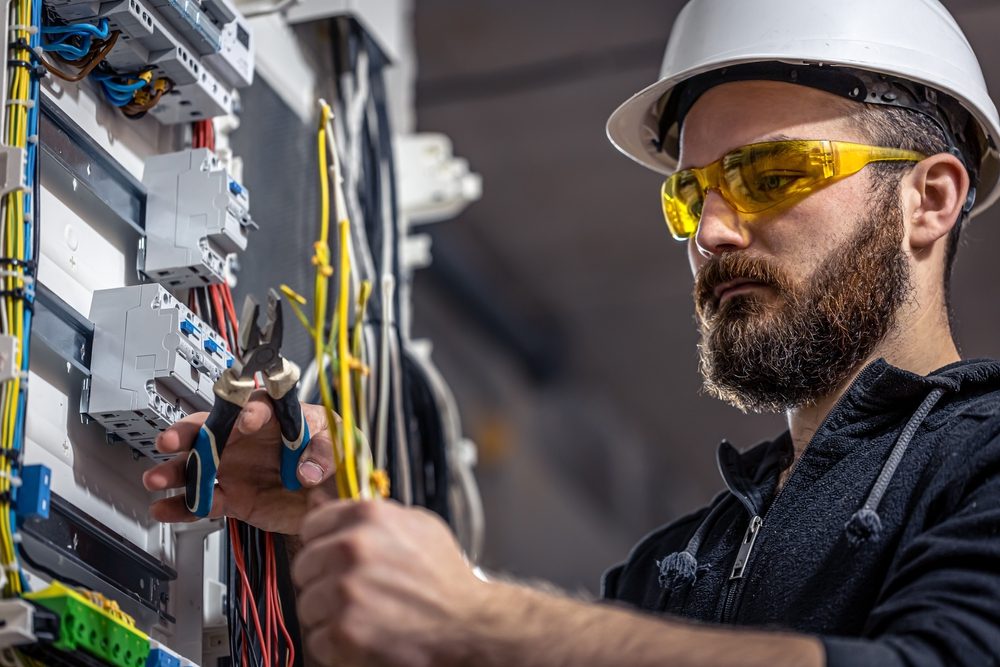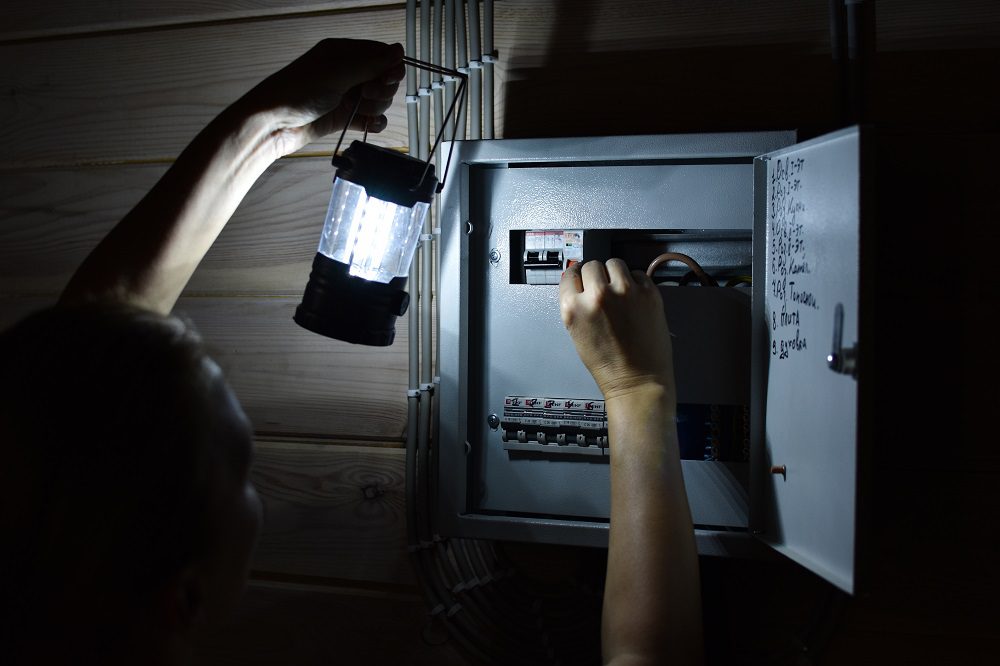Charlotte’s weather can turn fast. A quiet afternoon can become a thunderstorm with high winds, hail, and cloud-to-ground lightning. Homes in Dilworth, Plaza Midwood, NoDa, Ballantyne, SouthPark, and Steele Creek see short outages, nuisance tripping, and voltage spikes more often than most homeowners realize. A little planning protects appliances, keeps critical systems running, and reduces the chances of an emergency call for electrical repair Charlotte NC.
What storm season does to a home’s wiring
Lightning strikes and utility switching cause sudden voltage spikes. Those spikes travel through the service drop, the panel, and every circuit tied to it. Even a brief surge can pit relay contacts in HVAC air handlers, corrupt smart thermostat boards, and weaken refrigerator compressors. Wind and saturated soil increase fault risk as branch circuits rub against structure or moisture enters exterior boxes. The damage is not always dramatic on day one; repeated small hits shorten the life of electronics and motors.
A typical call after a summer storm starts with “half the house is out.” Often the main breaker is fine, but one leg from the meter lost continuity due to a loose lug or water in the meter base. Other times, AFCI breakers trip repeatedly because siding leaks let moisture into bedroom receptacles. Understanding these patterns helps a homeowner prepare the right way.
Start with a panel health check
The panel is the backbone. If it is clean, tight, and up to current code, the home rides out storms far better. A licensed electrician should open and inspect it once a year, and right before peak storm months if possible. He looks for heat discoloration on bus stabs, set-screw torque on breakers, corrosion on neutral and ground bars, and proper labeling. Panels older than 25 years often show brittle insulation and mismatched breakers, which create nuisance trips under storm load.
In Charlotte, many homes still have Federal Pacific or Zinsco panels. These brands have known failure modes and carry higher risk under surge conditions. Replacing them with a modern panel that supports whole-home surge protection is one of the most effective upgrades a homeowner can make.
Whole-home surge protection is no longer optional
Point-of-use strips help with small electronics, but they cannot stop a major transient at the service. A Type 1 or Type 2 surge protective device (SPD) installed at the main panel clamps large spikes before they spread through branch circuits. In real numbers, a quality SPD with a surge current rating in the 50–80 kA range and response time under 1 nanosecond costs less than a single HVAC control board replacement. For homes with a detached garage or backyard office, a second SPD at the subpanel adds another layer.
Surge devices do wear down as they take hits. A good unit includes an indicator light. During a maintenance visit, an electrician can test and replace it if the indicator shows depletion. Ask for an SPD with a clear status window and a manufacturer warranty that includes connected equipment coverage.

Grounding and bonding make surge protection work
An SPD is only as effective as the grounding it uses to dump energy. In clay-heavy Charlotte soil, ground rods need proper spacing and secure clamps to reach a low resistance path. Many older homes still use a single rod with a loose clamp. The current standard calls for two rods at least six feet apart if the measured resistance is high. Bonding water and gas lines is also critical so lightning energy does not find a path through appliances.
A quick field check: if the main grounding electrode conductor is undersized, corroded, or spliced poorly, the system will behave unpredictably during storms. Correcting this is a straightforward fix that pays off during the first major lightning event.
Protect the weak links: outdoor equipment and entry points
Moisture is the what is electrical repair enemy of stable connections. Exterior receptacles, landscape lighting splices, pool equipment, attic fans, and the HVAC disconnect all need weather-rated enclosures and intact gaskets. UV exposure hardens covers, then wind-driven rain pushes inside. An electrician will replace broken in-use covers, add dielectric grease to terminations where appropriate, and re-route low-voltage thermostat and cable lines to drip loops that shed water, not funnel it into boxes.
Satellite and internet coax should include a ground block tied to the same grounding system as the electrical service. Without this bond, a surge can ride in on the cable line and exit through the TV or modem.

Backup power: what actually works in Charlotte
Storms in Mecklenburg County often produce short outages lasting 15–60 minutes, with occasional multi-hour blackouts. A portable generator with a listed interlock or transfer switch is a practical solution for many homes. It keeps the fridge, lights, sump pump, and Wi‑Fi running without backfeeding the grid. Never use a “suicide cord” or run a portable without a proper inlet and switching device; the risk to utility workers and the home is real.

For homes where uninterrupted power to medical devices or a server rack matters, a standby generator with an automatic transfer switch is the gold standard. It starts within seconds and handles entire circuits, including HVAC. Right-sizing matters. An honest load calculation will prevent overspending on capacity that never gets used. Many Charlotte homes run smoothly on 14–18 kW units if they prioritize one HVAC system at a time.
A smaller but valuable layer is a UPS for the router, modem, and a workstation. A 700–1000 VA UPS bridges the gap between grid loss and generator start-up, prevents file corruption, and keeps communication online while decisions are made.
GFCI and AFCI: reduce nuisance trips and stay safe
Storm moisture reveals weak insulation. GFCI devices at kitchens, baths, garages, exterior, and basements should be current models with self-test features. Aging GFCIs false trip more during humid weather. Replacing units older than 10–12 years reduces headaches.
AFCI breakers protect sleeping areas from arcing faults. They may trip more during storms due to voltage noise. Brand-consistent breakers matched to the panel and clean terminations reduce this behavior. If an AFCI trips repeatedly after a storm, an electrician should test the circuit for nicked conductors behind outlets or water intrusion at exterior terminations.
A quick pre-storm routine any homeowner can follow
- Unplug the most sensitive electronics: home theater, gaming consoles, desktop PCs. Verify the whole-home surge protector indicator shows normal status. Close and latch exterior in-use covers; move cords out of puddle zones. Charge UPS units and power banks; test flashlights. Set refrigerators to a slightly colder setting a few hours before a predicted outage.
These simple actions reduce risk and buy time if the grid goes down. They complement, not replace, proper electrical upgrades.
After a storm: what to check before flipping breakers
If the lights flicker and breakers trip, slow down before resetting everything. Walk the exterior first. Look for downed lines on the property; if anything is on the ground or tangled in trees near the service mast, call the utility and keep clear. At the meter base and service mast, look for bent conduit, loose weatherheads, or scorch marks. If water likely entered the meter base, leave the main off and call for electrical repair Charlotte NC.
Inside, sniff for a burnt odor near the panel and around the HVAC air handler. Check GFCI outlets; if tripped, reset once. If an AFCI trips again immediately, leave it off and schedule a diagnostic. Reboot smart thermostats and modems after the power stabilizes; surges often lock them up even if they appear on.
Real scenarios seen across Charlotte
In South End condos, compact panels and heavy electronics loads make surge protection crucial. A single storm took out six televisions in one building where cable grounds were missing, while neighboring units with proper bonding stayed fine. In older homes off The Plaza, cloth-insulated wiring behind plaster can absorb moisture. After a week of rain, small faults cause intermittent AFCI trips that disappear once the walls dry. Replacing a few suspect runs near exterior walls solved the issue permanently.
Newer builds in Berewick often run subpanels to garages for EV chargers. Without a secondary SPD in the garage, EVSE boards take the hit from nearby strikes. Adding a Type 2 SPD at the subpanel costs far less than replacing a charging station.
How Ewing Electric Co approaches storm readiness
A strong plan blends inspection, targeted upgrades, and homeowner habits. Ewing Electric Co starts with a system assessment: service condition, panel make and model, grounding quality, existing SPDs, and outdoor exposure points. The team tests breaker torque, evaluates device age, and documents code gaps. From there, recommendations stay practical. For many homeowners, the top three moves are panel SPD installation, grounding correction, and exterior device weatherproofing. Those three steps address most storm damage patterns seen across Charlotte.
For clients with frequent outages, the team sizes and installs transfer switches for safe portable generator use, or designs a standby generator system with load management. They coordinate permits with the City of Charlotte and Duke Energy service requirements, and they return after the first major storm to re-check surge device status and tighten terminations that settled.
When to call for help
Any sign of heat at the panel, buzzing that persists after the storm, repeat AFCI or GFCI tripping, or scorched outlets points to a fault that needs a licensed electrician. If a whole-home surge protector shows a fault indicator, schedule service quickly; running without protection leaves appliances exposed. For urgent electrical repair Charlotte NC, same-day service prevents small issues from becoming a panel replacement.
Ready before the next line of storms
Charlotte’s weather will keep testing homes. A grounded plan keeps the lights on and electronics safe: healthy panel, verified grounding, whole-home surge protection, weatherproof exterior gear, and a safe backup power method. Ewing Electric Co helps homeowners across Ballantyne, SouthPark, University City, Matthews, and Mint Hill prepare now rather than after a costly failure. To schedule a storm-readiness assessment or request electrical repair Charlotte NC, contact Ewing Electric Co and put a proven plan in place before the next storm rolls through.
Ewing Electric Co provides dependable residential and commercial electrical services in Charlotte, NC. Family-owned for over 35 years, we handle electrical panel upgrades, EV charger installation, generator installation, whole-home rewiring, and 24/7 emergency repairs. Our licensed electricians deliver code-compliant, energy-efficient solutions with honest pricing and careful workmanship. From quick home fixes to full commercial installations, we’re known for reliable service done right the first time. Proudly serving Charlotte, Matthews, Mint Hill, and nearby communities.
Ewing Electric Co
7316 Wallace Rd STE D
Charlotte,
NC
28212,
USA
Phone: (704) 804-3320
Website: https://ewingelectricco.com/ | Google Site
Social: Facebook | Instagram | Twitter
Map: View on Google Maps